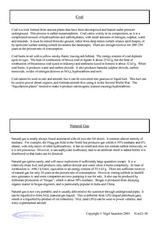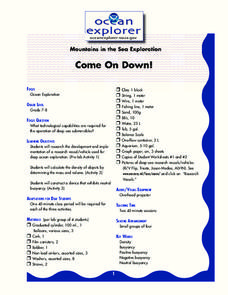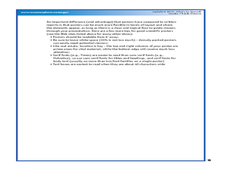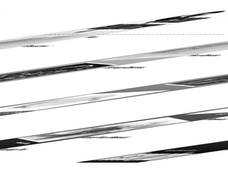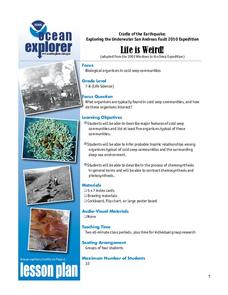American Museum of Natural History
What's This?: Mythic Creatures
Fantastic beasts, and where to find them, are featured in a resource that offers images of real animals that just might have given rise to some of mythic creatures of legend.
Creative Chemistry
Fuels - The Good, the Bad, and the Ugly
Science pupils choose from twelve questions about five different types of fuel: hydrogen, ethanol, crude oil, natural gas, and coal. They construct a table to compare them and then determine the best fuel. Your physical science class...
K5 Learning
Rhyming Animals
Second graders read an informational text passage on animals, as well as a poem that incorporates rhyming words. Then, 2nd graders answer questions based on what they read.
NOAA
El Niño
El Nino, La Nina ... and the Santa Maria? The 11th installment of a 23-part NOAA Enrichment in Marine sciences and Oceanography (NEMO) program explains the mechanism of El Nino/Southern Oscillation. Pupils use previous data to determine...
K12 Reader
Nouns as Adjectives
Sometimes nouns can do the work of adjectives! Young language arts pupils analyze ten noun phrases and determine which contain adjectives, and which contain nouns that describe other nouns.
Montana State University
Meet Mount Everest
Learning about one landform might seem boring to some, but using the resource provided practically guarantees scholar interest. The second in a sequential series of eight covering the topic of Mount Everest includes activities such as a...
Curated OER
Living in Extreme Environments
Students examine the characteristics of the ocean floor and the importance of of extreme environments. In this investigative lesson students use four methods to sample populations, gather, record and analyze data from a scientific...
Curated OER
Come On Down!
Students research the implementation of a research vessel used for ocean exploration. In buoyancy lesson students will construct a device that shows neutral buoyancy.
Curated OER
Life is Weird
Students study the organisms that are found in cold seeps and see how they interact with each-other. In this biological organism lesson students describe the major features of cold seeps and the process of chemosynthesis.
Curated OER
What's So Special?
Students study the biology and morphology of Lophelia corals. In this investigative lesson students explain how the coral contributes to communities, and create a poster.
Curated OER
Picture This!
Learners compare and contrast different types of light on the electromagnetic spectrum. In this investigative lesson students create a photographic image that demonstrates the infrared, ultraviolet and polarization phenomena.
Curated OER
Matter and Energy
Learners investigate the effects of air pressure on humans by utilizing the Internet. In this physical science lesson, students research the Internet to discover altitude sickness and air pressure. Learners prepare against...
Curated OER
Let's Go to the Video Tape!
Pupils examine biological diversity and see how it relates to the concepts of variety and relative abundance. In this investigative instructional activity students view a video on biodiversity and complete an activity.
Curated OER
Entering the Twilight Zone
Students describe major features of cold seep communities and list organisms that are found in these communities. For this water habitat lesson students examine trophic levels, describe the process of chemosynthesis and list...
Curated OER
To See or Not to See
High schoolers identify and discuss key factors that determine how effective color camouflage is in certain habitats. For this investigative lesson students divide into groups and study light.
Curated OER
The Benthic Drugstore
High schoolers identify at least three pharmacologically- active chemicals derived from marine invertebrates. They describe the disease-fighting action of at least three pharmacologically-active chemicals derived from marine invertebrates.
Curated OER
Let's Hit the Slopes!
Students study benthic communities in the Gulf of Mexico and explain their roles. In this investigative lesson students participate in a group activity and study how to calculate and index of biological communities.
Curated OER
Twisted Vision
Students investigate the vision adaptations in marine animals in their environments. In this life science lesson, students use polarized filters and make observations. Students explain how the adaptation of polarized vision is an...
Curated OER
It's a Gas! Or is it?
Students describe the effects of temperature and pressure on solubility of gases and other materials. For this investigative lesson students read an article and answer questions about it.
Curated OER
Big Fleas Have Little Fleas!
Young scholars study seamounts and learn the importance of structures to species. In this ocean explorer lesson, students participate in an activity that teaches them how to modify a seamount so that they are more suitable for...
Curated OER
The Electric Sieve
High schoolers examine different mixtures and how they can be separated. In this electric sieve lesson students complete an activity that allows them to separate mixtures.
Curated OER
Powerful Verbs
In this vivid verbs practice activity, students examine 9 sentences and 3 paragraphs. Students then replace the boldfaced verbs with more vivid verbs. A word bank with suggestions in included.
Curated OER
Life is Weird
Students describe features of cold seep communities and list organisms that can be found in these communities. For this exploratory lesson students complete an activity and describe the process of chemosynthesis.
Curated OER
Life is Weird
Students describe features of cold seep communities and investigate five organisms that live there. In this biological organisms activity students research a given species and give an oral presentation on their results.
Other popular searches
- Deep Sea Environment
- Deep Sea Environments
- Deep Sea Angelfish
- Deep Sea Diver Clipart
- Deep Sea Habitat
- Deep Sea Diving
- Deep Sea Fish
- Deep Sea Corals
- Deep Sea Zones
- Deep Sea Writing
- Deep Sea Vents
- Deep Sea Submersibles

